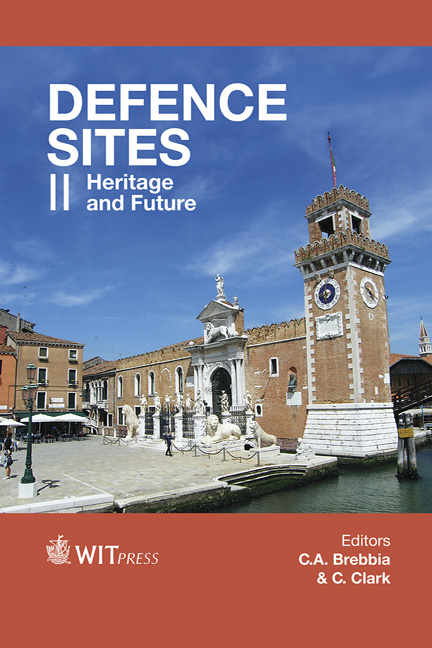Layout And Shape Of Dürer’s Geschützrondellen In The Spanish Defensive Architecture: The Horseshoe Pattern In The Enlightenment
Price
Free (open access)
Transaction
Volume
143
Pages
11
Page Range
41 - 51
Published
2014
Size
966 kb
Paper DOI
10.2495/DSHF140041
Copyright
WIT Press
Author(s)
J. Lluis i Ginovart, J. M. Toldrà Domingo, A. Costa Jover, S. Coll Pla, P. de Sola Morales i Serra
Abstract
Most of the defensive structures of military architecture are based on polygonal shapes staked out by triangulation. There are few buildings designed with curved structures, as the pirobalistic platforms, Geschützrondellenas mentioned by Albert Dürer (1471–1528) in his Etliche underricht zu befestigung der Stett, Schlosz, und flecken (1527). The Spanish military engineer Pedro de Lucuze (1692–1779) defined a similar kind of fortifications, called horseshoe pattern in his Principios de Fortificación (1772). Before the publication of this treatise, several bulwarks were built in the Spanish coast, where we can find the geometrical forms of the oval and the ellipse. The staking out of the ellipse appears in the treatises L’architettura (1567) by Pietro Cataneo, and Le Timon du Capitaine (1587) by Ambroise Bachot. There, the layout of the oval was made starting from one of its axis. Vicente Tosca (1651– 1723) establishes for the first time in Volume I of his Compendio mathematic (1707) infinite solutions of ovals from the main axis. Through this knowledge, Spanish military engineers can approach similar layouts for ellipses and ovals. The geometrical assessment of the Fuerte de San Jorge de Alfama (c.1744) enables the analysis of the layout of the project as well as its staking out, recovering the old discussion of the ellipsis et ovum.
Keywords
military architecture, XVIIIth century, ellipse, geometry, oval





